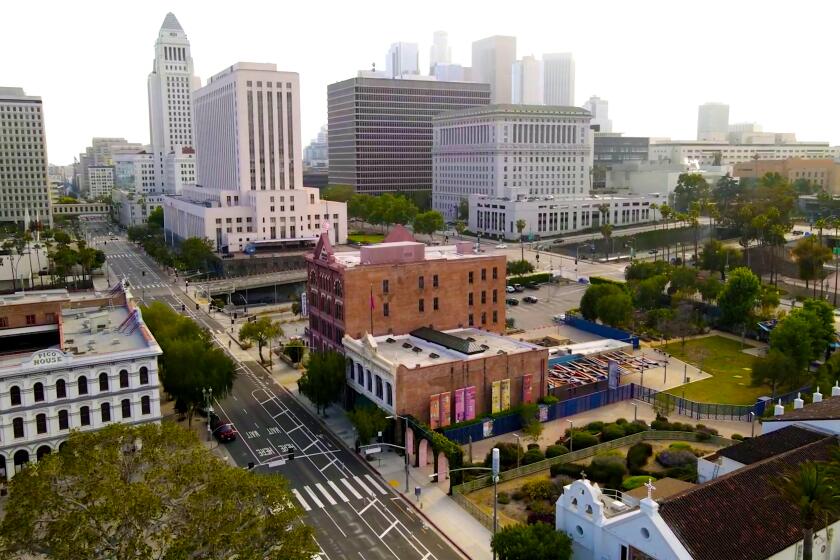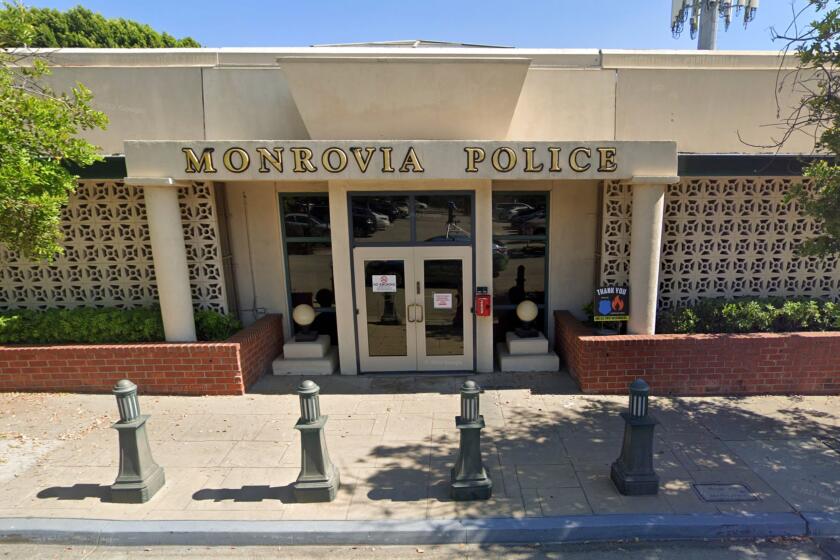Suit Challenges Simi’s Police Pursuit Policy
Shelley Padalecki was driving home from a wedding reception in April 1999 as a high-speed police pursuit was making its way across town at more than 100 mph.
Shortly after 11 p.m., Padalecki reached an intersection just when the chase did. The truck being pursued slammed into the 18-year-old college student’s vehicle, fracturing her skull and sending her into a coma.
Now Padalecki is suing the city of Simi Valley for negligence, alleging that police officers acted recklessly by speeding on city streets and through crowded intersections. The suit also alleges that the city’s policy on police chases violates state law by giving officers “unfettered discretion” to decide when to pursue a fleeing car.
“In the alleged safest city in our county, the biggest thing people have to fear is their own police department,” said Padalecki’s attorney, Mark Hiepler, best known for the multimillion-dollar verdicts he has won against HMOs. “They authorize officers to chase anyone for anything at any speed.”
The case, which is scheduled to go to trial today in a Ventura courtroom, will ask a jury to weigh the police officers’ need to catch crime suspects against the community’s need to protect innocent bystanders.
“It’s very tragic what happened to this young lady,” said Steve Blades, a private Los Angeles attorney representing the city. “But the Legislature decided years ago that it’s not the fault of police when criminals decide to flee.”
Under California law, police are not liable for damages in claims arising from police pursuits, provided they have guidelines for officers on when and how to conduct high-speed chases.
In addition, a U.S. Supreme Court ruling three years ago shielded police from being sued in federal court for deaths or injuries resulting from high-speed chases.
But a trial court judge refused to dismiss the case. Both the Court of Appeals and the U.S. Supreme Court also declined to review the decision.
Blades said Simi Valley should not be held liable because the city has a policy that clearly defines when officers should and should not pursue a suspect. Hiepler said that policy does not comply with state law because it doesn’t adequately provide for supervision and doesn’t place sufficient limitations on pursuits.
Simi Valley’s policy states that an officer may pursue a car when a suspected criminal or traffic violator flees. The policy mandates that officers weigh the gravity of the offense against the potential dangers of pursuing, considering factors such as traffic, weather and time of day.
*
Police Chief Randy Adams declined to comment on the policy or the pending suit. In a deposition last fall, Adams said the pursuit was tragic because it resulted in a serious injury, but said the officers followed procedure.
“I think our guidelines are good guidelines,” Adams said in the deposition. “They provide for evaluation on a case-by-case basis.”
Other law enforcement agencies in the county, including the Sheriff’s Department and the Oxnard and Ventura police departments, have similar policies that allow officers to pursue for infractions, misdemeanors or felonies or if the suspect flees. Last week, Ventura’s city manager sent a letter to the high court in support of Simi Valley’s request for review.
The letter stated that the case “involves an issue of vital interest to Ventura, namely the city’s ability to use the immunity defense.” It went on to say that if the trial court ruling stands, “then it is likely that Ventura and other public entities will need to amend their own pursuit policies.”
In Simi Valley, police engaged in 36 pursuits during the last five years. About 20% of those ended in collisions. There were no deaths and 11 injuries--nine suspects and two bystanders, according to the Police Department.
In June 1999, a separate pursuit by sheriff’s deputies that ended in Simi Valley resulted in the death of a 69-year-old retired aerospace mechanic, who was struck by a fleeing car.
California consistently leads the nation in the number of police pursuit fatalities, according to the National Highway Traffic Safety Administration. Between 1995 and 1999, there were 163 deaths.
The debate over police chases is not new. Police agencies have argued for years that they need to be able to make split-second decisions on when to pursue crime suspects, without the courts later second-guessing those decisions.
“Recent case law says that courts don’t get involved in the management of police departments,” said attorney Blades. “Because it really would never end.”
Officers also argue that more criminals will be on the streets if suspects know they can flee without being chased. While most chases begin with traffic violations, they often end with arrests on more serious charges.
The American Civil Liberties Union, which has been vocal about its opposition to high-speed pursuits, has argued that chases should be limited to cases involving felonies and dangerous criminals. The organization advocates a ban on high-speed pursuits for traffic infractions and minor violations.
“It’s just horrific the number of injuries and deaths to innocent people and to police officers as a result of high-speed chases for minor traffic infractions,” said Elizabeth Schroeder, associate director of ACLU of Southern California.
Hiepler, an Oxnard attorney, does not oppose all police pursuits, but said that minor traffic infractions do not justify endangering the public. He said police should use other techniques more often, such as spike strips, roadblocks and helicopters.
*
In Padalecki’s case, Hiepler said the city did not want to set up a roadblock. “So Shelley became a human roadblock,” he said.
The April 24, 1999 chase began when police noticed a truck driving without its headlights on. The driver didn’t stop and police followed him. At times, both vehicles traveled at speeds higher than 100 mph, the suit states.
At Madera Road and Los Angeles Avenue, the driver crashed into a traffic signal pole and then hit Padalecki’s pickup truck, trapping her inside. The driver, a 14-year-old, was arrested on suspicion of felony evading and grand theft auto.
The suit says that the officers’ actions forced the suspect to drive erratically and collide with Padalecki. But Simi Valley’s attorney said the city and its officers should not be blamed. “Police don’t initiate pursuits, criminals do,” Blades said.
At the time of the crash, Padalecki attended Moorpark College and had recently gotten engaged. She awoke from a coma about two weeks later, and has undergone numerous brain and reconstructive surgeries.
Though most of her physical injuries have healed, Padalecki’s personality has changed dramatically, her father said. She is afraid of everything, has memory problems and doesn’t think straight. She has not been able to return to school or work, and she lives with her parents.
“It’s been a vicious nightmare,” said Robert Padalecki, who now lives in Texas. “Nobody could repair the damage and the trauma we went through.”
Shelley Padalecki is seeking damages of an unspecified amount; her father said they have spent hundreds of thousands of dollars in medical expenses. He hopes the suit will force the Simi Valley Police Department to change its pursuit policy.
“Simi Valley prides itself on being the safest city,” he said. “But how safe is a city when police go as fast as they want? Who is going to be the next victim?”
More to Read
Start your day right
Sign up for Essential California for news, features and recommendations from the L.A. Times and beyond in your inbox six days a week.
You may occasionally receive promotional content from the Los Angeles Times.






